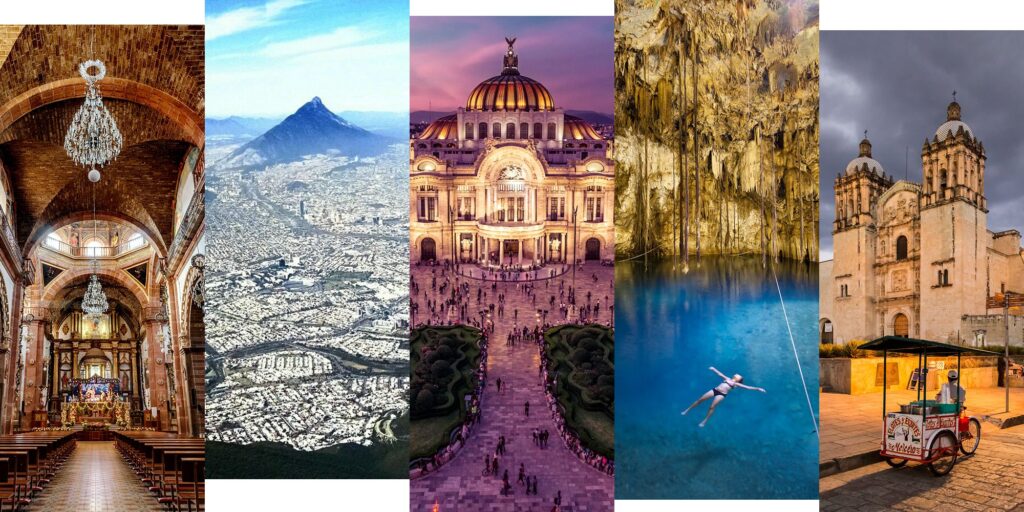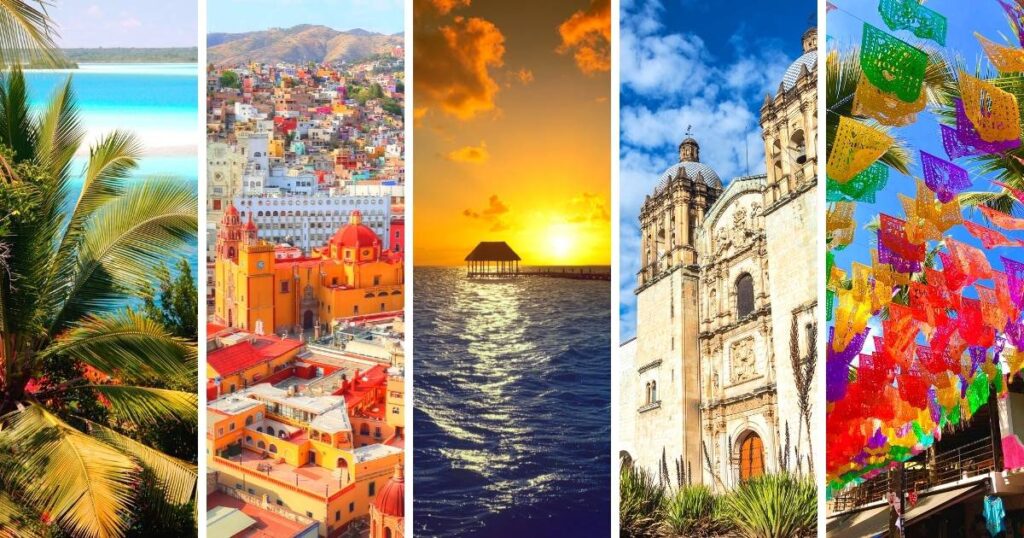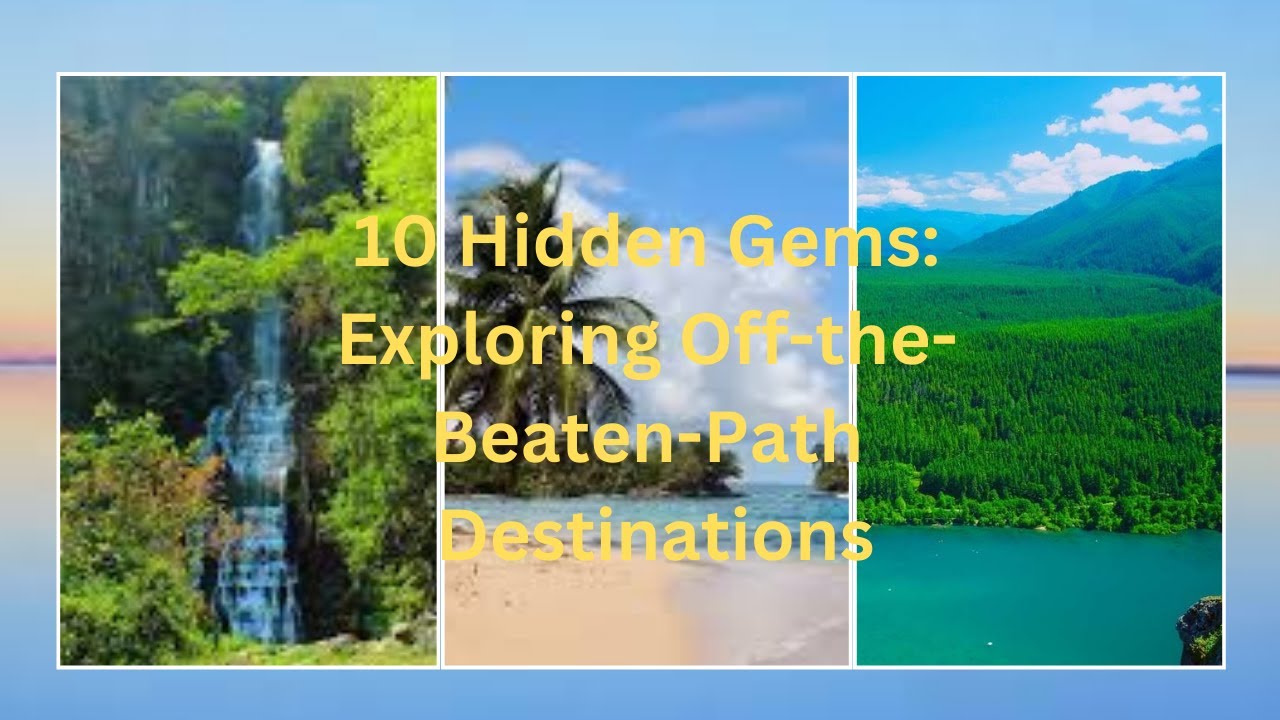Exploring Hidden Gems
Discovering new locations, immersing oneself in other cultures, and making lifelong experiences have always been the main goals of travel. Even though well-known travel spots like Paris, Bali, and New York City are undoubtedly charming, there’s something very fulfilling about finding hidden gems—those off-the-beaten-path places that provide a more private, genuine, and uncrowded travel experience. We’ll look at a few of these undiscovered gems in this post; these are places that are worth visiting even though they might not be on the typical traveler’s itinerary.

1. Hallstatt, Austria
Tucked up in the Austrian Alps, the charming village of Hallstatt appears to have stepped out of a storybook. It is nevertheless less busy than other Alpine resorts, which makes it an ideal getaway for people looking for peace and quiet despite its breathtaking beauty. Situated on the banks of Lake Hallstatt, the village features small alleys, quaint houses from the 16th century, and a backdrop of towering mountains.

The Hallstatt Skywalk, which provides expansive views over the town, the lake, and the surrounding Alps, is one of Hallstatt’s top attractions. In addition, visitors can explore the Salt Mine and the Dachstein Ice Caves, which offer historical and natural marvel insights into the region. Hiking paths, lakeside boating, and winter skiing are available in the area for individuals who love being outside.
2. Matera, Italy
Nestled in the southern Italian province of Basilicata, Matera is one of the world’s oldest cities still under continuous human habitation. The historic Sassi cave homes, etched into the limestone cliffs, are what distinguish Matera from other places. Since these cave dwellings have been inhabited since prehistoric times, they provide a window into the past. They are also churches and even eateries.
Matera was designated the 2019 European Capital of Culture and has been recognized as a UNESCO World Heritage Site in the recent past. In spite of this, compared to other Italian cities, it is still comparatively undiscovered. Discover the winding streets of the Sassi neighborhoods, pay a visit to the churches carved out of rock, which house historic frescoes, and stay in quaint cave-style accommodations. Matera is a hidden gem worth exploring because of its exceptional fusion of natural beauty, history, and culture.
3. Jujuy Province, Argentina
Argentina is well-known for its dynamic cities like Buenos Aires and breathtaking landscapes like Patagonia, but the northwest region of the nation, Jujuy Province, has something very different to offer. The striking landscapes of this area are well-known, and they include the vibrant hills of Purmamarca, the vast salt flats of Salinas Grandes, and the strange rock formations of Quebrada de Humahuaca.
Indigenous cultures abound throughout Jujuy, and places like Tilcara provide insights into the customs and way of life of the surrounding people. In addition to hiking through breathtaking canyons and exploring historic ruins, visitors may take part in lively festivals honoring the region’s cultural legacy. Jujuy’s low level of mass tourism makes it the ideal place for travelers looking for an off-the-beaten-path adventure because it allows you to fully enjoy the area’s natural beauty and culture without being surrounded by tourists.
4. Faroe Islands, Denmark
Some of the most stunning and pristine natural vistas on the planet may be found in the Faroe Islands, an isolated island in the North Atlantic. The Faroe Islands, which are comprised of eighteen volcanic islands with untamed cliffs, undulating green hills, and striking coastlines, are a part of the Kingdom of Denmark. Numerous pathways on the islands lead to breathtaking vantage spots, hidden beaches, and waterfalls, making them a sanctuary for nature lovers, hikers, and birdwatchers.
The Faroe Islands are a great place for people who want to get away from the masses since, despite their beauty, not many people have heard of them. Highlights include the island of Mykines, which is home to puffin colonies, and the settlement of Gasadalur, where the Múlafossur waterfall plunges into the ocean. The Faroe Islands have a rich cultural history as well, including traditional Nordic-inspired music, artwork, and food.
5. Luang Prabang, Laos
While Bangkok and Bali are well-known tourist destinations in Southeast Asia, Luang Prabang, Laos, provides a more tranquil and culturally diverse experience. Situated at the meeting point of the Nam Khan and Mekong rivers, this UNESCO World Heritage city is renowned for its pristine French colonial architecture, historic Buddhist temples, and verdant surrounds.
The alms-giving ceremony, during which hundreds of monks dressed in saffron robes gather donations from citizens and tourists in a centuries-old custom, is one of the most unforgettable events in Luang Prabang. In addition, the city is home to stunning temples that provide insights into Laos’ spiritual and regal past, like Wat Xieng Thong and the regal Palace Museum.
Nature enthusiasts can take a boat ride on the Mekong River to see the Pak Ou Caves, which are home to thousands of Buddha statues, or explore the neighboring Kuang Si Falls, a multi-tiered waterfall with turquoise pools. Luang Prabang is a hidden gem in Southeast Asia because to its laid-back vibe and diverse culture.
6. Gjirokastër, Albania
Albania is still one of the least visited nations in Europe, and one of its undiscovered gems is the ancient town of Gjirokastër, which is located in the south of the nation. Gjirokastër, also called the “City of Stone,” is distinguished by its intact Ottoman architecture, which includes stone homes, winding cobblestone lanes, and a towering medieval castle that dominates the skyline.
One of the biggest draws is the Gjirokastër Castle, which provides expansive views of the town and the Drino Valley surrounding it. The Ethnographic Museum, which is located in the former residence of Albania’s dictator Enver Hoxha, is another example of the town’s rich past. In addition, visitors can peruse the bazaar, which offers regional specialties and traditional crafts for sale.
Gjirokastër is the ideal location for travelers looking for an off-the-beaten-path experience in Europe because of its unique combination of history, architecture, and breathtaking natural surroundings, as well as its relatively low profile.
7. Bhutan
The secluded Himalayan nation of Bhutan, sometimes known as the “Last Shangri-La,” has mostly escaped mainstream tourism. This nation is renowned for its dedication to maintaining its environment, customs, and culture—putting the pursuit of Gross National Happiness above the pursuit of economic expansion.
Travelers to Bhutan can enjoy the nation’s distinctive festivals, including the Paro Tsechu, when monks perform traditional mask dances, as well as see historic monasteries and trek through pristine mountain scenery. One of Bhutan’s most well-known locations is the famed Tiger’s Nest Monastery, which is positioned on a rock and provides both spiritual experiences and breath-taking views.
Bhutan’s restricted tourism strategy, which includes a daily charge for lodging, meals, and a guide, guarantees that the nation will always be a unique and uncrowded travel destination. Bhutan is an unmatched hidden gem for travelers looking for a trip that blends natural beauty with cultural immersion.
8. Aysén Region, Chile
Although Patagonia in Chile is well-known, the Aysén Region is a less-traveled but no less beautiful option. Aysén, which lies in the center of Chilean Patagonia, is distinguished by its striking scenery, which includes fjords, glaciers, and thick woods. Though off the main route due to its isolated position and difficult terrain, the area is a wonderland waiting to be discovered for intrepid tourists.
Aysén’s highlights are the Northern Patagonian Ice Field, where hikers may see stunning ice formations and sculpted tunnels with blue waters, and the Marble tunnels of General Carrera Lake. The Queulat National Park, renowned for its pristine wildness and hanging glacier, is also located in this region.
Aysén’s tiny towns and villages provide a window into the customs of the ancient Patagonian way of life, which is characterized by friendly hospitality and a close bond with the earth. For those looking for an adventure in Patagonia that is off the main road, Aysén is a hidden gem due to its secluded location and unspoiled natural splendor.
9. Siwa Oasis, Egypt
Egypt is well-known for its historic temples and pyramids, but the Siwa Oasis provides a whole new kind of experience. Situated close to the Libyan border in the Western Desert, Siwa is a secluded and tranquil haven encircled by salt lakes, palm groves, and the Great Sand Sea.
The town of Siwa is distinct from the rest of Egypt due to its rich history and distinctive culture, which is heavily influenced by the Berbers. Alexander the Great is reported to have consulted the ruins of the ancient Oracle of Amun, and visitors can also explore the labyrinthine salt-and-mud Shali Fortress.
Sandboarding, dune buggying, and stargazing may be enjoyed in the nearby desert, and Siwa’s hot springs, such Cleopatra’s Bath, provide a tranquil haven. Siwa is a hidden treasure in the vast Egyptian desert because of its solitude, peace, and distinctive culture and history.
10. Lofoten Islands, Norway
Beautiful archipelago of rocky mountains, deep fjords, and charming fishing communities is the Lofoten Islands, which are situated in northern Norway. The Lofoten Islands are still largely unexplored despite their beauty, making them a tranquil and pristine vacation spot for those who enjoy the outdoors.
With options for hiking, kayaking, fishing, and even surfing in the Arctic waters, the islands are a haven for outdoor enthusiasts. During the winter, when the sky are bright and dark, the region is one of the greatest spots on Earth to see the Northern Lights.
The local seafood, especially cod, is a gastronomic highlight, and the traditional red-and-white fishing cottages, known as rorbuer, make for beautiful lodging. A hidden treasure in Norway’s Arctic wilderness, the Lofoten Islands offer a unique blend of natural beauty, recreational sports, and cultural legacy.
Conclusion
Travelers can have a more intimate and genuine experience of the globe by discovering hidden gems, away from the hordes and commercialization of well-known tourist spots. These off-the-beaten-path destinations provide unforgettable natural scenery, distinctive cultural encounters, and a fulfilling feeling of exploration that make travel genuinely worthwhile. Thus, the next time you’re organizing a vacation, think about visiting one of these undiscovered treasures; you might find a new favorite spot.










Leave a Reply